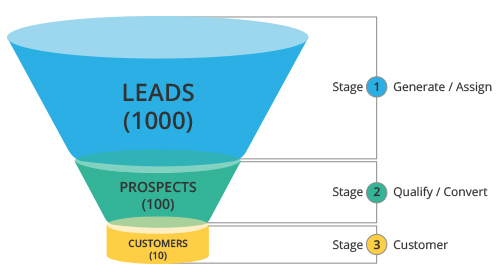What is lead scoring and how can it help my marketing campaign performance or making the handshake between a marketing qualified lead (MQL) to a sales qualified lead (SQL) better? I imagine this comes up quite a bit because this list of topics comes up from a simple browser search for lead scoring.
- Definition
- Best Practices & Examples
- Systems & Software
Definition. Lead scoring is used to identify a prospect or customer's inclination and interest level towards a sale of your product or services. A customer downloading a whitepaper or case study from your website is an indication of interest; though just one touch point is not enough for you to make a sale. Scoring methodology typically comes with more robust email marketing and marketing automation platforms, such as Pardot/Salesforce Sales Cloud, ExactTarget/Salesforce Marketing Cloud, HubSpot, Marketo, or Eloqua. Lead scoring gives marketers a way to rank, prioritize, and measure sales leads in order to close a sale. It is typically packaged with email marketing since prospect or customer interest is easily gauged from opens/clicks/interactions/and other web-based actions.
Best Practices. Is there a best way of setting up your lead scoring models? Some platforms only allow one model to run at any given time (looking at you Silverpop). While other platforms use a combination of a numeric and letter scores to attribute rank to leads; with an automated numeric value and/or letter grade that indicates a prospects need or interest in speaking with sales. Aside from the technical setup, speaking with your sales team on what creates the Ah ha! moment for a customer may help you identify when a lead goes from cold to warm to hot.
Simply creating a campaign that drives prospects to sign up for a demo of your product might not be a best practice; but a marketer's campaign follow-through with additional messaging about how the demo was, when and if a prospect is willing to purchase the product after demoing it is a necessary step to making this action a best practice. Marketing could certainly say that they generated 5,000 SQLs this quarter and it's not their fault that Sales couldn't close a single one. This is why speaking with your sales team is an imperative step in creating best practices for your marketing campaigns.
The unicorn in this scenario is a Sales Accepted Lead (SAL) that covers all of what sales is looking for before starting to close a lead...a prospect's BANT (budget, authority, needs, and timeline). Lead scoring can certainly help you identify who these people are in your database. For every marketing question that a prospect responds to in some positive way, there should be an attributed numeric value that adds to a prospect's lead score.
A cleaner view of who the prospect is (+1 point for each completed field):
- Contact Name (First, Last, Salutation)
- Contact Phone (direct or mobile)
- Contact Title or Contact Role
- Contact Postal Address
- Contact Company
- Contact Email Address
- Contact Web URL
For most contact records, this will already have a starting score of 1-5 when a prospect joins your database through a web form for a demo, webinar, whitepaper/case study, or general inquiry contact us form.
I'd recommend at least +5 points for any of these firmographic fields:
- Industry
- Number of Employees
- Annual revenue
- Number of locations
- Sales cycle stage
- Decision maker(s)
- HQ or branch location
And, +50 to +100 points for these types of customer hand raising:
- Prospect downloads a Demo
- Sales call to setup/walkthrough product/service demo
- Prospect's BANT
Basically, the higher the lead score, the more likely they are going to purchase from you. If you use a progressive web forms, a feature of both Pardot and Hubspot, you can gradually get all the contact or firmographic information you want from a prospect who repeatedly comes to your website for content and/or information without having an epic long web contact form at the start.
However, giving a negative score for prospects who are not ready to buy is not the way to reset a prospect's score. An example of this: a K-5 math software company's lead scoring method was to give -100 points to prospects who didn't purchase after a product demo instead of resetting a prospect's score to 0 or some lower number below 50. This made it impossible for prospects who had gone through a demo (but didn't have the budget) to ever get back onto sales' radar.
Systems. You are unlikely to find a lead scoring system outside of email marketing software made for demand or lead generation such as HubSpot, Salesforce/Pardot/ExactTarget, Marketo, Act-On, etc. These are all comparable with each other in terms of triggering marketing or sales messaging, or alerting sales professionals, of a prospect's lead score when prospects take hand raising actions.

